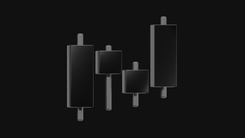How to Avoid Fraud When Investing in Tokenized Assets
Investing in tokenized assets is becoming increasingly popular. Stocks, real estate, commodities, art — all of these can now be purchased as digital tokens on the blockchain. It may seem like technology should enhance transparency and reduce risks, but in practice, tokenization has also opened the door to a new wave of fraud.
In this article, we’ll explain how tokenized assets work, common fraud schemes, and how you can protect your funds.
What Are Tokenized Assets?
Tokenization is the process of converting a real-world asset (like company shares, apartments, or gold) into a digital token that can be bought, sold, or held on a blockchain.
Example: you can buy 1/1000 of a building represented by a token on a platform and earn a share of the rental income.
Benefits of Tokenization:
- accessibility — invest even with a small amount of capital
- transparency — every transaction is recorded on the blockchain
- liquidity — assets can be sold quickly
However, the appeal and novelty of tokenization also attract scammers.
Common Types of Tokenization Fraud
1. Fake Platforms
A website is created with a professional look, allegedly selling tokens of real assets. There are documents, photos, reports — but no tokens are actually issued, and the money simply goes to scammers.
How to spot it:
- no registration or license
- no information about owners or team
- token cannot be found on a blockchain explorer
2. Fake Tokens
On popular blockchains, scammers can create tokens with the same name and logo as legitimate projects. These tokens are listed on DEXes or distributed through airdrops.
How to spot it:
- suspiciously low price
- no mention on the project’s official website
- few holders and low liquidity
3. Pump & Dump Schemes
Fraudsters artificially hype a token, often via social media, luring investors. Once the price rises, they dump their tokens, leaving everyone else with losses.
How to spot it:
- aggressive marketing
- promises of huge profits in a short time
- no real asset or revenue model backing the token
4. Breach of Commitments
Some projects do tokenize real assets but fail to fulfill promises — they stop paying returns, don’t provide reports, or block withdrawals.
How to spot it:
- vague investment terms
- no legal guarantees or contracts
- changing terms after raising money
7 Rules to Protect Yourself When Investing in Tokenized Assets
1. Check the platform’s license
Legitimate projects operate under regulations (EU, UAE, Singapore, US). No mention of jurisdiction = red flag.
2. Use blockchain explorers
Real tokens aren’t just images. Look them up on Etherscan, BscScan, etc., check the smart contract, holder count, and transaction history.
3. Avoid emotional investing
If you see promises of ‘100% APY’, ‘guaranteed profits’, or ‘unique opportunities’ — pause. Investing requires calculation, not gambling.
4. Look for third-party audits
Having audits, insurance, or partnerships with known players is a good sign — but always verify documents.
5. Use cold wallets
If investing long-term, don’t store tokens on platforms. Move them to your wallet to avoid hacks and freezes.
6. Diversify
Never invest everything in one project or asset class. Spread your portfolio across real estate, stocks, crypto, and stablecoins.
7. Research reputation
Read reviews, check forums, and media mentions. One suspicious detail is enough to reconsider.
EMCD Helps You Work with Tokenized Assets Safely
If you want to diversify your crypto portfolio with tokens, it’s essential to use trusted infrastructure.
EMCD Wallet — a non-custodial wallet from EMCD, lets you:
- store any tokens, including tokenized assets
- retain full control — only you hold the private keys
- safely connect to DeFi protocols and DEXes
- earn passive income through EMCD Earn
Try EMCD Wallet — an easy way to combine security, control, and convenience in one tool.
Conclusion
Tokenization offers exciting opportunities but demands caution. The digital asset world is growing fast, and new fraud schemes appear alongside it. To avoid traps:
- verify the project
- control your assets
- ignore flashy promises
A strong ecosystem like EMCD helps you avoid risks while enjoying the benefits of modern technology. Invest wisely — and tokenization will become a tool for growth, not disappointment.




